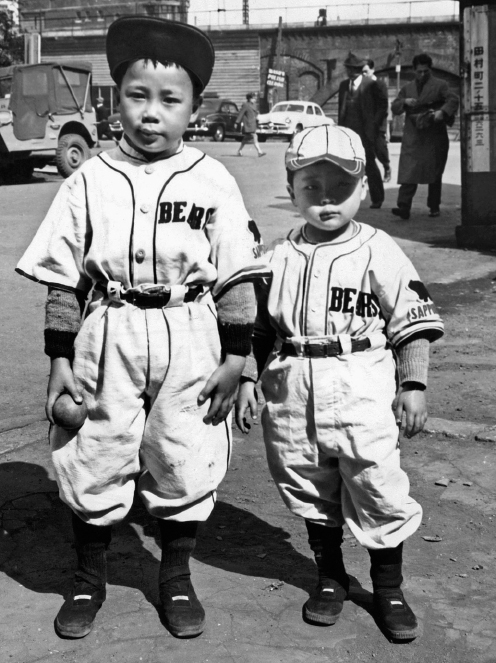Understanding World Societies:
Printed Page 968
Chapter Chronology

Baseball in Japan
Though baseball arrived in Japan in the late nineteenth century, it increased in popularity during U.S. occupation. This photo from 1950 shows children in their baseball uniforms, with a U.S. Jeep in the background. (Courtesy: CSU Archives/The Everett Collection)
Japan, like Germany, was formally occupied by all the Allies, but real power resided in American hands. U.S. general Douglas MacArthur exercised almost absolute authority. MacArthur and the Americans had a revolutionary plan for defeated Japan, introducing reforms designed to make Japan a free, democratic society along American lines.
Japan’s sweeping American revolution began with demilitarization and a systematic purge of convicted war criminals and wartime collaborators. The American-dictated constitution of 1946 allowed the emperor to remain the “symbol of the State.” Real power resided in the Japanese Diet, whose members were popularly elected. A bill of rights granted basic civil liberties and freed all political prisoners. Article 9 of the new constitution abolished the Japanese armed forces and renounced war. The American occupation left Japan’s powerful bureaucracy largely intact and used it to implement fundamental social and economic reforms. The occupation promoted the Japanese labor movement, introduced antitrust laws, and granted Japanese women equality before the law. The occupation also imposed revolutionary land reform that strengthened the small independent farmers who became staunch defenders of postwar democracy.
America’s efforts to remake Japan in its own image were powerful but short-lived. As Mao’s forces prevailed in China, however, American leaders began to see Japan as a potential ally, not as an object of social reform. The American command began purging leftists and rehabilitating prewar nationalists. When the occupation ended in 1952, Japan regained independence, and the United States retained its vast military complex in Japan. Japan became the chief Asian ally of the United States in its efforts to contain the spread of communism in East Asia.
